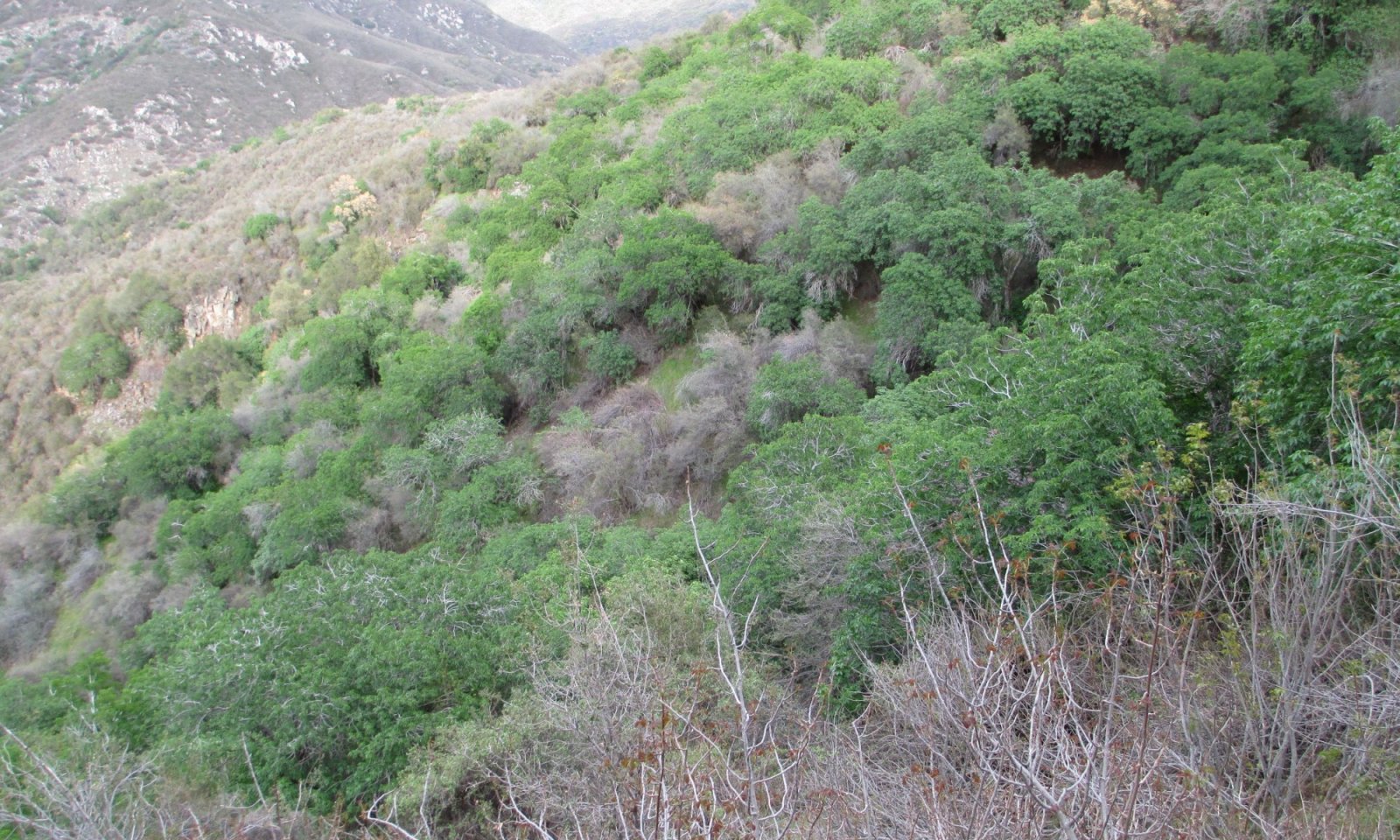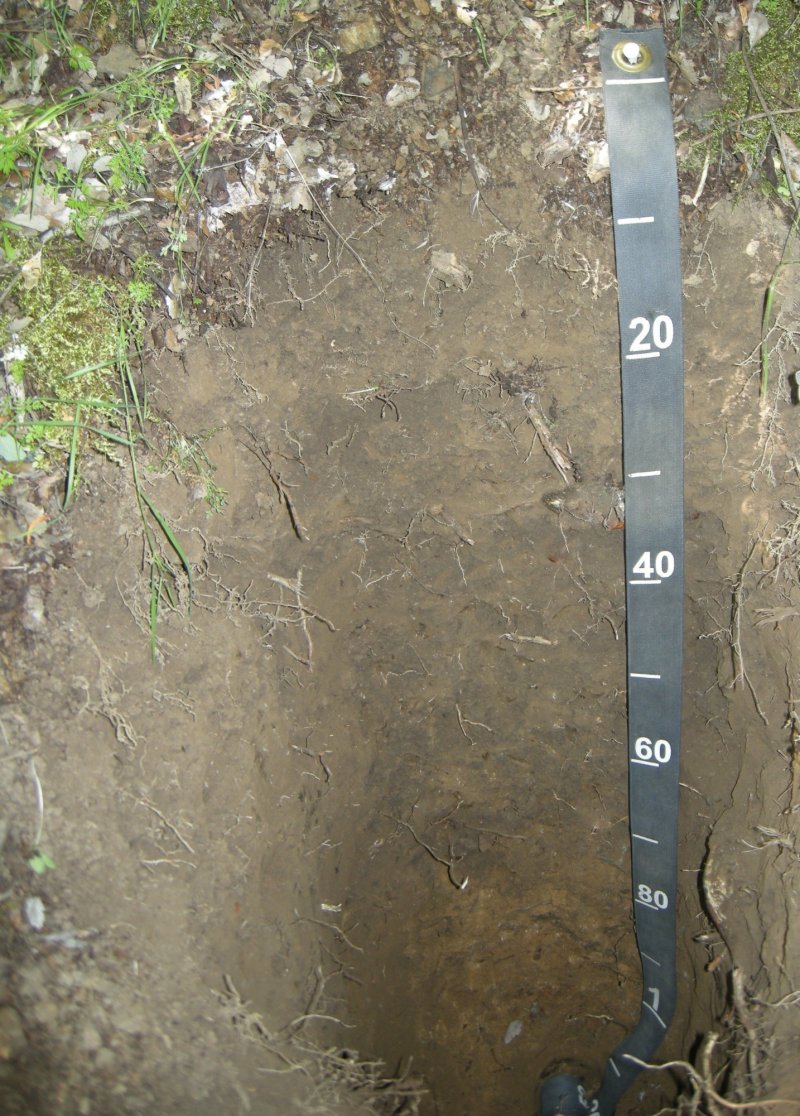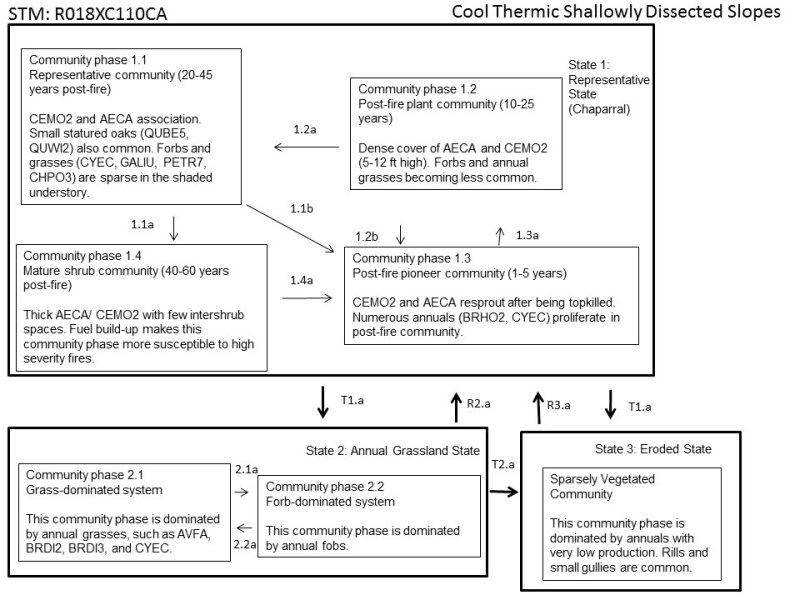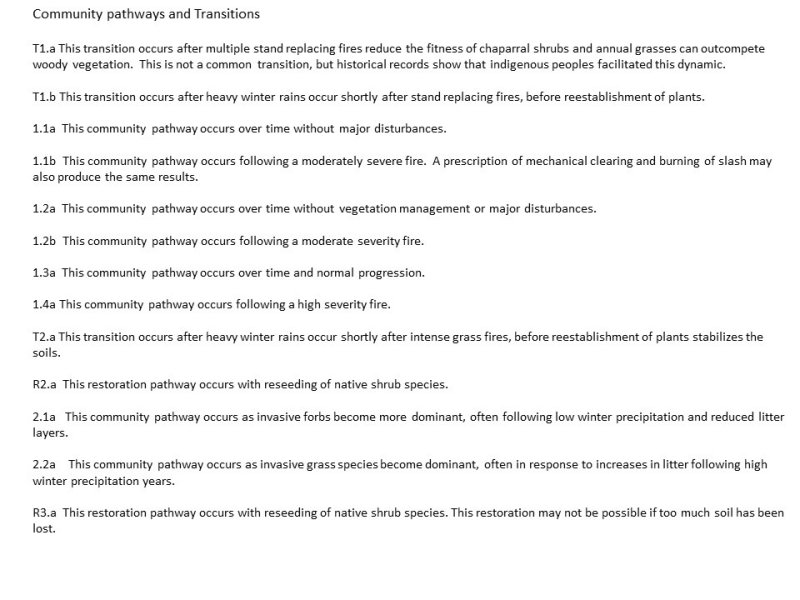

Natural Resources
Conservation Service
Ecological site R018XC110CA
Cool Thermic Shallowly Dissected Slopes
Last updated: 4/24/2024
Accessed: 11/24/2024
General information
Provisional. A provisional ecological site description has undergone quality control and quality assurance review. It contains a working state and transition model and enough information to identify the ecological site.
MLRA notes
Major Land Resource Area (MLRA): 018X–Sierra Nevada Foothills
Major Land Resource Area (MLRA): 018X–Sierra Nevada Foothills
Major Land Resource Area (MLRA) 18, Sierra Nevada Foothills is located entirely in California and runs north to south adjacent to and down-slope of the west side of the Sierra Nevada Mountains (MLRA 22A). MLRA 18 includes rolling to steep dissected hills and low mountains, with several very steep river valleys. Climate is distinctively Mediterranean (xeric soil moisture regime) with hot, dry summers, and relatively cool, wet winters. Most of the precipitation comes as rain; average annual precipitation ranges from 15 to 55 inches in most of the area (precipitation generally increases with elevation and from south to north). Soil temperature regime is thermic; mean annual air temperature generally ranges between 52 and 64 degrees F. Geology is rather complex in this region; there were several volcanic flow and ashfall events, as well as tectonic uplift, during the past 25 million years that contributed to the current landscape.
LRU notes
LRU XC Notes
LRU 18XC is located on moderate to steep mountains and hills in the Sierra Nevada Foothills east of Fresno, CA. The major differences between the southern and northern foothills are the dryer climate (12 to 37 inches of annual precipitation), greater summer/winter temperature variation, and steeper topography of the southern foothills. The geology of this region is predominately granitoid. The elevation ranges between 300 and 4100 feet above sea level. Warmer temperatures and lower precipitation (than at higher latititudes) allow for blue oak grasslands to exist at higher elevations. The soil temperature regime is primarily thermic, however some mesic soils are found at higher elevations of 18XC. At these upper elevations, the break in soil temperature regime (between thermic and mesic) is highly aspect dependent. Southern and western aspects at the steep, high elevations promote chamise-yucca plant assemblages. Buckeye is common in the concave positions. Riparian trees that are generally absent from the northern LRU’s include California Sycamore (Plantanus racemosa) and lemon scented gum (Eucalyptus citriodora).
Classification relationships
CLASSIFICATION RELATIONSHIPS
This site is located within M261F, the Sierra Nevada Foothills Section, (McNab et al., 2007) of the National Hierarchical Framework of Ecological Units (Cleland et al., 1997), M261Fc, the Lower Granitic Foothills and M261Fd, Southern Granitic Foothills Subsections.
Level III and Level IV ecoregions systems (Omernik, 1987, and EPA, 2011) are: Level III, Central California Foothills and Coastal Mountains and Level IV, Ecoregion 6c, Southern Sierran Foothills.
Ecological site concept
This site is characterized by very deep soils in narrow drainages on steep to very steep igneous intrusive and/or metamorphic hills and mountains. These parent materials range in composition from acidic to basic. Slopes typically near 100%. This site occurs on linear to concave slope shapes on highly dissected slopes. Precipitation typically ranges from 26 to 29 inches per year, and elevation ranges from 1850 to 2825 feet.
The main controlling factor on this ecological site is the greater available water capacity occurring on water-gathering surfaces and deeper soils within a dissected landscape (complex slopes), leading to greater plant production and high diversity of woody species (but fewer trees than in F018XC203CA, which occurs on simple concave slopes in the same elevation range). The higher AWC helps to account for the darker surface horizons due to the greater buildup of organic material. A representative soil component is Yuccacreek. Yuccacreek is a very deep, well-drained soil with thick organic matter accumulation in the soil surface. This soil is a coarse-loamy, mixed, superactive, thermic Ultic Argixeroll.
The vegetation community consists of chaparral shrubs, including dense buckeye (Aesculus californica), scrub oak (Quercus berberidifolia), California redbud (Cercis orbiculata), and alderleaf mountain mahogany (Cercocarpus montanus).
Associated sites
| R018XC107CA |
Thermic Granitic Foothills south-facing This site commonly occurs nearby. |
|---|
Similar sites
| R018XC107CA |
Thermic Granitic Foothills south-facing Site relationships being developed. |
|---|---|
| R018XC109CA |
Steep Marble Canyon Walls Site relationships being developed. |
Table 1. Dominant plant species
| Tree |
(1) Aesculus californica |
|---|---|
| Shrub |
(1) Quercus berberidifolia |
| Herbaceous |
Not specified |
Click on box and path labels to scroll to the respective text.





